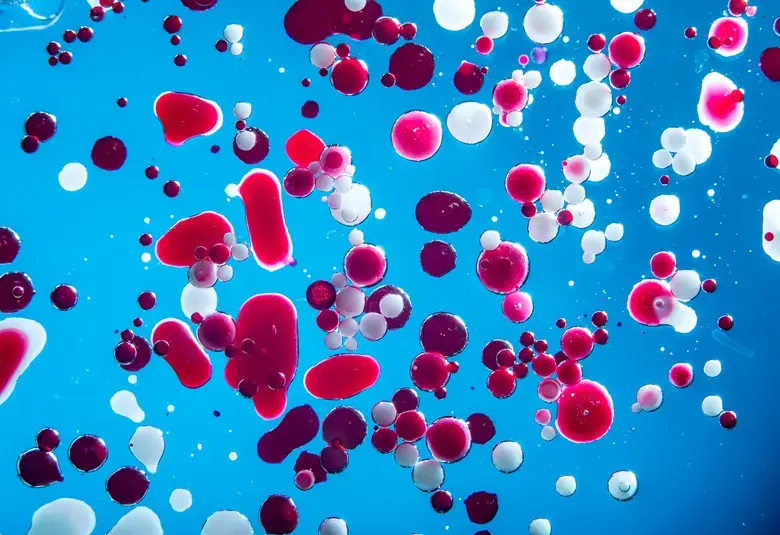Major depressive disorder (MDD) and substance use disorders (SUDs) are major global health problems. Both MDD and SUDs are highly associated with disease burden. MDD is one of the leading causes of global disease burden. According to the WHO report in 2004, MDD was ranked as the third in creating disability by Disability-Adjusted Life Years (DALYs)1. It was predicted that MDD will be the leading cause of disease burden in the next 5-10 years followed by ischemic heart disease and cerebrovascular disease and will be responsible for 8.2% of Years Lived with Disability (YLDs) in high-income countries by 2030.1 SUDs, including alcohol use disorder, are another important contributor of disease burden globally. According to a report of Burden of Disease Thailand in 2014, burdens from alcohol-related problems were ranked as the second place in males aged 15-29 years, whereas in the female group, they were ranked in the sixth place.2 These data demonstrated that it is crucial to provide an appropriate treatment to patients with MDD or SUDs to decrease the burden of disease and avoid further complications.
A Concept of Dual Diagnoses
The concept of dual diagnosis, which describes co-occurring mental disorders, is important in psychiatry. This term refers to the co-occurrence of two or more psychiatric disorders in the same patient simultaneously. Alcohol use disorder frequently co-occurs with MDD, and this co-occurrence highly suggests a bidirectional relationship between MDD and SUDs. It is well established that SUDs have an impact on severity of MDD and vice versa. Previous studies showed that patients diagnosed with both MDD and SUDs are likely to be at
younger age, male, living alone, and at risk of developing adverse consequences. One of the most challenging issues in treating these patients is the limited accuracy in making diagnoses of co-occurring MDD and alcohol use disorder. Frequently, mental health providers overlook these co-occurring disorders by making only one diagnosis at a time. Thus, it is likely that the patients might get delayed treatment, leading to developing greater severity in symptoms, lower medication adherence, more frequent relapses, and poorer functional outcomes. Given these negative consequences, mental health providers need to understand the concept of dual diagnosis and should be able to deliver effective interventions for both MDD and SUDs throughout the course of treatment.3
What are differences between MDD vs. MDD with comorbid SUDs?
MDD requires a complex neurobiological model to explain its pathophysiology. In many previous studies using Fluorodeoxy-D-glucose positron emission tomography-computed tomography (FDG-PET), the results demonstrated decreased cerebral glucose metabolism in multiple brain areas when compared to those without MDD. Moreover, not only hypoactivation pattern but also that of hyperactivation could be seen. For example, many studies found that MDD patients had hypoactivation in cognitive neuronal circuits, while negative emotion circuitry showed significant hyperactivation when compared to healthy subjects. These hypo-hyper patterns also have been seen in patients with SUDs. Previous PET studies in patients with cocaine and alcohol abuse have shown a pattern of hypometabolism in all areas of the brain, particularly in patients who were long-term users. However, triggering with certain substance could arouse amygdala significantly. Thus, both MDD and SUDs share the same patterns of brain metabolism and activation.
Several theories have been proposed to explain the basic of dual diagnosis. One is the concept of reward deficiency syndrome (RDS), also known as “born bad” archetype. It was first proposed by Blum et al.4 to explain underlying phenotype of disorders. Mainly, RDS is characterized by an insufficiency of a feeling of satisfaction. This might be associated with a dysfunction in brain reward pathway, which was particularly regulated by dopamine activity. Theoretically, some people might be susceptible to RDS more than others because they may have inherited problems with dopamine receptors. For example, children with Attention Deficit and Hyperactivity Disorder (ADHD) are likely to suffer from addiction problems, and they are probably at higher risk of substance use disorders.
Another model, which was proposed to explain the addiction disorders, is an allostatic model. It is related to changes of neurotransmission and dysregulation of hedonic processes5. Physiologically, hedonic responses to a certain stimulus is presented as positive and euphoric feelings shortly after exposure, followed by negative feelings after the termination of the positive feelings. In non-dependent subjects, amplitudes of positive and negative feelings are in balance. However, dependent subjects eventually suffer from changes of amplitude of oscillations in these hedonic processes. They exhibit a decreased amplitude of positive response coupled with an increased amplitude of negative feelings, resulting in the disruption of a hedonic set point.5 This altered allostatic process results in continuously declined intensity of hedonic feeling, especially the experiencing of pleasure in long-term drug users. This phenomenon explains manifestations of physiological tolerance and withdrawal, which lead to compulsive drug-seeking behaviours, as well as depressed mood in “drug crash” or “comedown”. It particularly occurs in a very potent stimulant such as cocaine, and it is unlikely that this imbalance will be restored to the normal state even after a long-term abstinence.
Other than disrupted hedonic processes in SUDs, altered neurotransmission in multiple brain areas also contributes to certain symptoms in SUDs. During binging state, brain dysfunction is likely to involve with Cortico-Striatal-Thalamic loop. Withdrawal state has been linked to decreased function in subcortical brain regions, especially insular cortex, which are responsible for negative emotion and agitation. Craving state mostly involves bilateral orbitofrontal cortex (OFC), which are highly connected to amygdala. Taken altogether, substance-related cues will activate bilateral OFC, basolateral amygdala (BLA) and insular cortex to trigger the central amygdala, which lead to internal reaction guiding to respond as either taking or not-taking substance. This neurochemical dysregulation in the amygdala has been proposed to be a core pathology in relapse. In sum, an alteration of neurotransmission in many brain regions, including reward pathway, in SUDs contributes to both altered hedonic processes, which cause negative mood, and responses to substance-related cues in a long-term course.6
The other important neurotransmitter than dopamine (D1 and D2 receptors in the prefrontal cortex), which plays a major role in addiction is serotonin (5-hydroxytryptamine; 5-HT) in the reward pathway particularly the 5-HT3 and 5-HT7 receptors. Relationship between dopamine and 5-HT regulation is very complex. Current evidence suggests that dopamine release is regulated by the 5-HT3 receptor which possibly impacts the reward pathway7. The 5-HT7 receptor is also recognized as one of the potential targets for treating addiction since it highly expresses in the brain reward pathway, and its neurons project to several regions including VTA, hippocampus and amygdala, similar to dopamine pathway.8 Therefore, dysregulation of both dopamine and 5-HT systems is a possible underlying pathology of many aspects in addiction. These include susceptible personality e.g. RDS or ADHD, or having anhedonia and craving from disruption of dopamine, while impulsivity and susceptibility to cue triggers possibly result from dysregulation of certain 5-HT receptors. 5,6
In addition to mood and behaviour problems in SUDs, cognitive impairment is another challenge in management of patients with SUDs. Previous studies showed that alcohol use disorder can cause persistent cognitive impairment. The results from a longitudinal study of 527 drinkers including Magnetic Resonance Imaging (MRI) of the brain and cognitive tests demonstrated that a long-term drinking and moderate to high severity of drinking were associated with hippocampal and corpus callosum atrophy in a dose-dependent fashion. Moderate to high (>14 units or 112 g/week) alcohol consumption could cause an impairment in cognitive function, especially when assessing with a letter fluency test, which the patients were asked to generate words beginning with a specific letter as many as possible within one minute. The test is used to determine selecting and retrieving information based on spelling as well as executive function.9 It has been known that patients with MDD usually demonstrated an impairment of executive function from this test. Thus, both MDD and SUD share certain clinical phenotypes including low mood, anhedonia (lack of pleasure) and cognitive impairment, particularly impaired attention, and initiation from executive dysfunction.
Pharmacotherapies for a dual diagnosis of MDD and SUDs
Due to the complexity of neurotransmitter disruption and diversity of clinical phenotypes in dual diagnosis, pharmacotherapies have only limited success in treating these disorders at the same time. Based on the current evidence, it indicates that the medications, which specifically target both dopamine and serotonin receptors, especially 5-HT3 and 5-HT7 receptors, may be helpful to improve hedonic processes, anhedonia, craving, drug-seeking behaviours and cognitive impairment by restoring both dopamine and serotonin function. Currently, medications used for depression and SUDs mainly modulate the activities of several serotonin receptors and serotonin transporter (SERT). A pooled data from several double-blind studies during 1994-2004 and some meta-analyses investigating pharmacotherapies (i.e. TCA, SSRI) for co-occurring depressive disorders and alcohol dependence have shown that antidepressants had a better efficacy than placebo in reducing depressive symptoms but had a relatively little impact in treating alcohol dependence. These findings suggested that previous antidepressants were very equivocal in reducing harmful drinking and symptoms of SUDs.10 Currently, the 5-HT3 antagonists have been investigated as an option for treatment in SUDs including alcohol, nicotine, and heroin. Ondansetron is a pure 5-HT3 antagonist that has been investigated for treating several mental health problems including depression and addiction.7 Preclinical studies found that the combination of ondansetron and topiramate were able to reduce ethanol consumption in heavy-drinking rats, and this result intrigued other investigators to study further on their properties in treating alcohol dependence and preventing relapse11. Given that there are still very limited data regarding the use of this combination in clinical practice, more study is needed to shed light on possible options of treatment in the future.
In conclusion, given the complex nature of a co-occurring of MDD and SUDs, it is crucial for mental healthcare providers to identify these disorders earlier and provide appropriate treatments for the patients. Based on limited clinical data on the available options of pharmacological treatment, antidepressants which modulate both serotoninergic and dopaminergic activities while focusing on procognitive effect could be a potential treatment option. Physicians should not hesitate to use these antidepressants to treat mood symptoms of MDD, while the patients may also benefit from some alleviation on certain symptoms of SUDs, particularly cognitive function. However, more research is needed to better address this issue in clinical practice to improve patient outcomes in the future.
For the latest updates on sea.progress.im, subscribe to our Telegram Channel https://bit.ly/telePiM
Our correspondent’s highlights from the symposium are meant as a fair representation of the scientific content presented. The views and opinions expressed on this page do not necessarily reflect those of Lundbeck.




